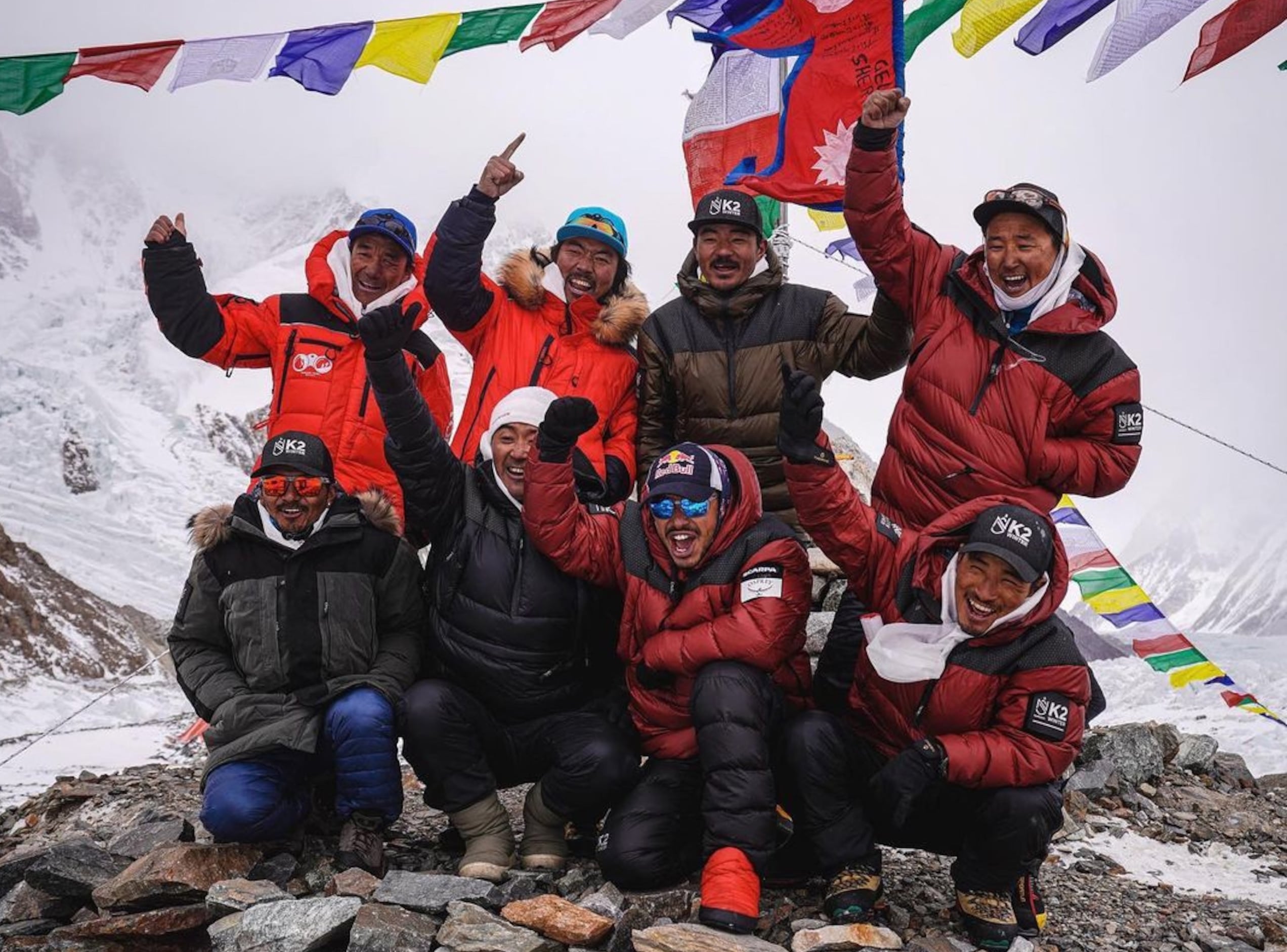Traditionally, mountaineering has been a sport in which powerful and wealthy men travel from Europe to “exotic” locations in the name of exploration and adventure, leveraging the labor of impoverished locals who are paid a pittance to take much of the risk and receive none of the reward. It’s all for the honor of their own reputations and the glory of the mother nation. Picture a mountaineer or explorer from the early to mid 20th century, and a cartoonish figure emerges: a guy in khaki pants and riding boots with a monocle dangling off a chain on his vest, sipping martinis at the Royal Geographic Society and swapping stories with polite society about the “cheeky natives” in a room with goddamn elephant heads mounted on the walls.
Today monocles may only make ironic appearances in Williamsburg, but the entitled attitude of birthright adventurism remains strong in the sorry bunch of climbers who failed to climb much past Camp 3 on K2 this winter. Since getting utterly schooled by the team of 10 Sherpa-Nepali climbers who nabbed the first winter ascent of K2, one of the last great prizes in mountaineering, all sorts of pitiful “questions”—de facto accusations—have been murmuring around internet forums. “Questions remain” is the frequent dogwhistle naysayers use to throw shade at the Nepalis’ ascent—as if there wasn’t a fucking video of all 10 of them marching arm in arm to the summit of K2.

For me the only question that remains is how some of these people can be so self-centered as to not realize that they sound like a bunch of entitled crybabies. A recent interview with Tomaz Rotar on Explorer’s Web outlines the nature of the K2 Crybabies™️ complaints: that the Nepalis “lied” to other climbers by telling them that they weren’t going for the summit, when in fact they were.
Which is true, as Mingma G acknowledged. So what? The only way you could ever see this tactic as some kind of betrayal—and not as a brilliant fuck-you move to nab the prize for your team and your team alone—is if you’ve been groomed on a certain tradition. The one in which Nepalis have one, and only one, role—to haul your ass to the summit.
Another non-accusation accusation concerns the fact that subsequent climbers couldn’t figure out how to cross a massive crevasse higher on the mountain in the dark. They’re also mad-sad-mad that the Nepalis didn’t tell them about the crevasse, so they were unprepared. This statement from Rotar is just amazing:
“How did everyone on the Nepali team cross the crevasse? I have read Mingma and Sajid’s accounts, and the more I read, the less I understand. The ropes started, as Mingma said, 200 to 300m above Camp 3, but then he states that they fixed everything, including the crevasse that they somehow crossed.
But the route we all followed on the second push ended at a real void. Sajid said there were no ropes where they jumped over it, but I can’t believe they just jumped that huge crevasse—they must have found a different passage, although I really looked around and saw no option. It was dark, of course, but I still can’t solve the riddle.
Maybe the Nepalis fixed two lines of ropes, the one leading to a dead end and the second that took them to the summit?”
–Rotar
Essentially what he’s saying is that the Nepalis are either spiteful little bastards who went out of their way to fix bait ropes that would lead to dead ends, or they’re spiteful little liars who pulled some kind of shenanigans so that no one else would reach the summit this season.
Good, I say. They deserve to bask in the glory of this ascent. This feels like a watershed moment for mountaineering, in which a group of people who have historically played second fiddle get to enjoy the spotlight. Let them have it.
As today’s cultural reckonings take a much-needed critical look at our history, there are heated intellectual debates about whether the entire structure of any aspect of society is irrevocably corrupted and therefore is justified in being torn down by any means necessary. I’m much more optimistic and less cynical than most progressives on this point. Mountaineering’s history hasn’t always been fair or righteous, to put it mildly, but look how far we’ve come. The 10 best mountain climbers in the world right now are all Nepali. And in 10 or 15 years from now, when I predict that all the big Everest outfits will be Nepali owned and run, we’ll look back and see the first winter ascent of K2 as watershed moment in that progression.





Hello Andrew,
I found your article refreshing, the way you highlighted how role-changing was this ascent. One might wonder if, in future, Nepalese climbers will flat-out go after the sponsorship money now mostly reserved for Western mountaineers.
Funny. Today, on a walk in a village near home (Surrey, UK), I thought about the chef at the Torino hut on the Mont Blanc. Nepalese. One of the few people who could find a job on the summit of Europe and take it as a step downhill.
Stories by the ‘Masters’ at an Opera to some far distant exotic places like Everest and the Black Continent are about to over what Nepalis just did.
On a sour note, some in Pakistan sense foul play with Pakistani mountaineer (or porter!) – Ali Sadpara’s death in high peakes’ ice.